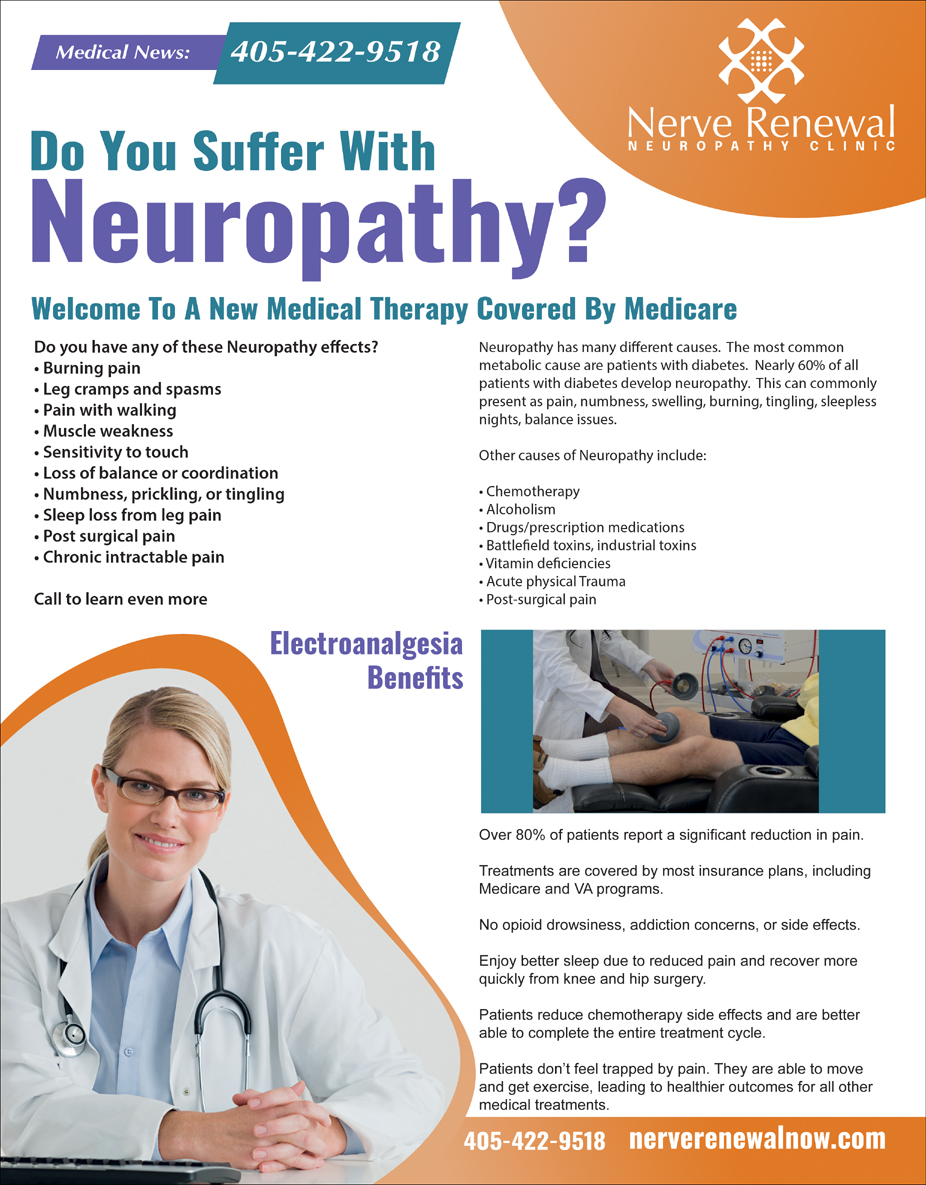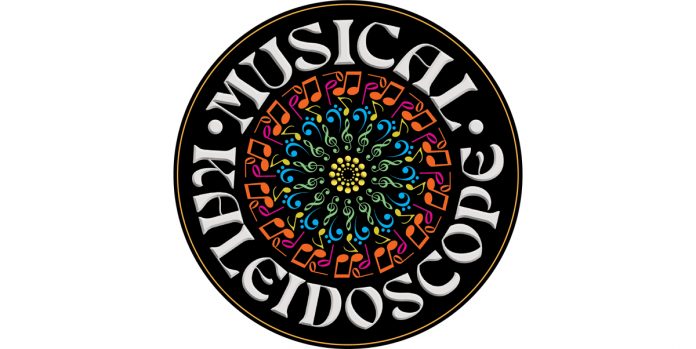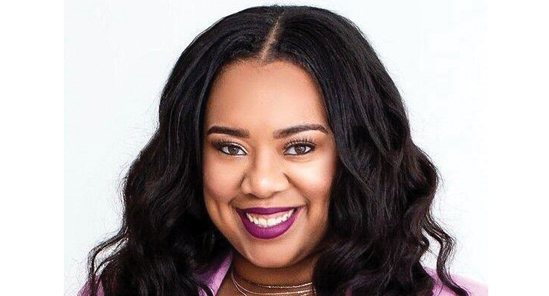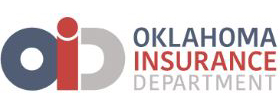Although extremely rare, adverse events have occurred after COVID-19 vaccinations, and people affected have exercised their rights to seek compensation. However, the U.S. government program that considers COVID-19 vaccine injury claims lacks accountability, transparency and cost-effectiveness, according to a recently published study led by a researcher in the Hudson College of Public Health at the University of Oklahoma Health Sciences Center.
The study, published in the current issue of the Journal of Law and the Biosciences, was led by Junying Zhao, Ph.D., Ph.D., an assistant professor of health administration and policy at the Hudson College of Public Health. The study provides the first-ever economic examination of the government’s Countermeasures Injury Compensation Program (CICP), whose design is rife with unintended consequences, Zhao said.
The CICP has its roots in the Public Readiness and Emergency Preparedness (PREP) Act, which was enacted by Congress in 2005. The PREP Act authorizes the U.S. Department of Health and Human Services (HHS) to issue a declaration in response to a public health emergency like COVID-19. As part of the declaration, companies that manufacture and distribute vaccines, as well as medical professionals and others who administer them, are granted immunity from tort liability claims — essentially, they cannot be sued in state or federal courts for any injury or death.
The PREP Act rightfully eliminates liability concerns for the large number of people quickly responding to a public health crisis like COVID-19, Zhao said. But the U.S. government still must provide a mechanism to compensate individuals and families when the evidence shows a person was harmed or died as a result of receiving the vaccine. The CICP was created to address injury claims related to public health emergencies.
“My expertise is applying economics to the intersection of medicine and law,” Zhao said. “A particular branch of law relevant to healthcare is tort law. When COVID-19 vaccinations became available, I became interested in how someone would seek justice if they were injured, or how their families would be compensated if a family member died. Although it has been very rare — only three adverse events reported per one million people in our study — we still need a fair program for people to seek compensation.”
Zhao’s discovery of the inadequacies within the CICP came after comparing it to the government’s decades-old program that responds to vaccine injury claims concerning traditional vaccines against the measles, seasonal flu and others that are administered routinely, not in response to an emergency like COVID-19. Called the Vaccine Injury Compensation Program (VICP), it is located within the judicial branch of the federal government and operates in a typical court fashion in which attorneys for both the plaintiff (the person seeking compensation) and defendant (HHS) present evidence to a judge who specializes in vaccine injury cases.
In contrast, the CICP is located within the administrative branch, specifically HHS. Medical experts working for HHS make decisions for vaccine injury claims rather than each side making its case before a judge.
“In the CICP program, HHS serves as both the defendant and the judge,” Zhao said. “There is no third party to make sure both sides are heard. The design of the program incentivizes HHS to reject claims in order to reduce budget expenses.”
That assertion is reflected in the compensation amounts awarded by CICP as compared to the non-emergency VICP. In her study, Zhao found that the average compensation per adjudicated claim from the VICP is $243,129, while the average compensation from the CICP is $45,697. That translates to about one-fifth the amount of compensation for a COVID-19-related vaccine injury compared to the amount awarded for injuries caused by non-emergency vaccines.
“If someone has a mild adverse event, $45,000 may be sufficient,” Zhao said, “but what if a family’s primary breadwinner is temporarily or permanently disabled, or dies? In that case, $45,000 is not nearly enough to support a family in a lifetime, nor is it the worth of life.”
Zhao also found discrepancies in the administrative costs between the CICP and VICP. Administrative costs in the VICP are $24,000 per claim, money that pays judges, attorneys and medical experts. In contrast, the administrative cost per claim in the CICP is $40,000, which only pays medical experts within HHS.
The study highlighted another potential barrier for people seeking compensation for a COVID-19 vaccine injury. If a person’s claim is denied by the VICP, he or she can file an appeal and the case is presented again before a judge. However, in the CICP, a person can ask for the claim to be reconsidered, but it is reviewed by a similar group of medical professionals with no transparency about their identity or credentials.
To conduct the study, Zhao took a deep dive into information from the White House budget and the Department of Treasury. Her findings are especially relevant given that the CICP and VICP fulfill the same role, yet have such different structures and spending outcomes. Since the CICP began with the PREP Act in 2005, it has experienced only occasional public health emergencies, such as the H1N1 influenza outbreak in 2009 and the ongoing COVID-19 pandemic. The VICP, in contrast, has been operating continuously since 1986 with lower administrative costs and higher compensation payouts.
In the publication, Zhao makes several policy recommendations that would improve the compensation process for future public health emergencies. They include merging the CICP and VICP and locating the single program in the federal claims court, which is the VICP’s current home. Alternatively, the publication recommends that Congress consider incremental changes, such as judicial review of the CICP, increased transparency, financial and performance audits, and more cost-effective use of taxpayer money.
The publication produced by the study was rigorously peer-reviewed, Zhao said, and fills a gap of knowledge about the compensation process during public health emergencies. The PREP Act is essential for a rapid response to crises like COVID-19, Zhao said, and vaccine adverse events continue to be exceedingly low in proportion to the number of vaccines administered. But Americans deserve a fair and transparent opportunity to seek compensation when they feel they have been harmed, she said.
“Vaccines are incredibly important for public health, but the design of the federal CICP represents a conflict of interest and lacks checks and balances,” she said. “From a public health and public policy perspective, the program needs to be improved so that it more effectively reduces vaccine hesitancy by serving as a warranty for vaccine safety.”
The publication can be found at https://academic.oup.com/jlb/article/9/1/lsac008/6555422. Zhao’s team included several faculty researchers from the Department of Economics at the University of Oklahoma’s Norman campus: Firat Demir, Ph.D., Pallab K. Ghosh, Ph.D., and Myongjin Kim, Ph.D.; and Austin Earley, graduate student researcher in the Hudson College of Public Health at the OU Health Sciences Center.
Local Researcher Publishes Study Highlighting Deficiencies in COVID-19 Vaccine Compensation Program
Brightmusic Chamber Ensemble Turns the “Musical Kaleidoscope”
Festival from Mozart to Chickasaw composer Jerod Tate
Guest pianist Peter Miyamoto joins current and returning Brightmusic musicians to take a turn at different musical combinations through four concerts June 10, 12, 13, and 14 at our pre-pandemic venue: St. Paul’s Cathedral in downtown Oklahoma City.
A Norman native, Jerod Tate generously offered his music to be performed at no charge during the pandemic. Co-artistic director Amy I-Lin Cheng says, “We have been wanting to program something by Jerod for a long time.
Many of the festival’s composers drew on their ethnic heritage for inspiration, from Polish Jewish composer Mieczyslaw (Moishe) Weinberg to Albéric Magnard of France, who died defending his house from German soldiers in World War I.
Concert 1 – Friday, June 10 7:30 pm – Amy Beach, Summer Dreams Op. 47 for Piano Four Hands – Kevin Puts, Air for Cello and Piano – David Baker, Sonata for Clarinet and Piano – Antonín Dvorák, Quintet for Piano and Strings in A Major, Op. 81
Concert 2 – Sunday, June 12 2:30 pm
The Mae Ruth Swanson Memorial Concert – Edvard Grieg, Sonata No. 3 in C Minor for Violin and Piano, Op. 45 – Mieczyslaw Weinberg, Sonata for Clarinet and Piano, Op. 28 – Wolfgang Amadeus Mozart, Quartet for Piano and Strings in E-flat Major, K. 493
Concert 3 – Monday, June 13 7:30 pm – Jerod Tate (Chickasaw), Pisachi (Reveal) for String Quartet – Aram Khachaturian, Trio for Clarinet, Violin and Piano – Franz Schubert, Piano Trio in B-flat Major, D. 898
Concert 4 – Tuesday, June 14 7:30 pm
– Jacques Ibert, Trois pièces brèves for Wind Quintet
– Wolfgang Amadeus Mozart, Quintet for Piano and Winds in E-flat Major, K. 452
– Albéric Magnard, Quintet for Piano and Winds in D Minor, Op. 8
For more information about the ensemble and upcoming concerts, visit www.brightmusic.org
OKLAHOMA CITY ADVENTURE DISTRICT ANNOUNCES NEW EXECUTIVE DIRECTOR

The Oklahoma City Adventure District (OKCAD) is excited to announce the hiring of Brittani Hunter as Executive Director. Hunter will be responsible for leading and managing the OKCAD including bolstering fundraising activities, marketing its members as well as promoting the area’s momentum and opportunities for economic development.
A Tulsa native, Hunter earned dual Bachelors of Science degrees in Sport Management and Marketing from Oklahoma State University and a Master of Business Administration with a focus of management from Southern Nazarene University. Her experience with the Oklahoma City Thunder created a passion for community engagement and as owner of Spiked. A Coffee Concept, located on NE 23rd Street, Hunter has further strengthened her business skills and local community ties. Using her entrepreneurial background, Hunter plans to work closely with the OKCAD Board to build relationships in the District and across the City to foster sustainable change in northeast Oklahoma City.
“We are excited to welcome Brittani in her new role,” said Dwight Lawson, OKC Zoo’s executive director and OKCAD Board Chair. “Brittani brings incredible experience and enthusiasm to this position. Through her leadership, we are confident she will continue to propel the District forward while building on our mission and connections with our members, visitors and the community.”
Hunter is eager to show her support as an advocate for OKCAD and is ready to promote the diverse entertainment and development opportunities in the District to visitors from Oklahoma City and the region.
Located in Northeast Oklahoma City, OKCAD is home to some of the Oklahoma’s most outstanding attractions including National Cowboy and Western Heritage Museum, Remington Park, Science Museum Oklahoma, the Oklahoma City Zoo and USA Softball Hall of Fame Complex and Museum and more–all within a 2-mile radius. In 2000, the attractions, in cooperation with Frontier Country Marketing Association, began combining their resources to create a marketing effort promoting the area as an entertainment destination for tourists and local residents. OKCAD was recognized by the City Council of Oklahoma City as an official entertainment district in 2003. Today, more than 3.3 million people visit the District annually to experience its world-class attractions and more. To learn more about OKCAD visit www.okcadventure.com.
Broadcaster Celebrates “Race to Remember”

Story and photo by Darl DeVault, Contributing Editor
Since its inception in 2001, Mark Bravo, 64, has added color commentary to the Oklahoma City Memorial Marathon’s live television broadcast on KFOR-Channel 4 locally while actively supporting the race throughout the year and on marathon weekend. From hosting the event’s two-day Health and Fitness Expo to helping with invited legends of the sport coming to the race to inspire runners both at the Expo and all weekend, Bravo has devoted hundreds of hours to the event over the years.
He takes great pride in making sure its national reputation as the “Run to Remember” leaves participants with two distinct emotions. The first is to bring together runners and spectators from around the world to honor those who were killed, those who survived and those who were changed forever in the 1995 Oklahoma City bombing of the Alfred P. Murrah Federal Building. Another source of pride the race has fostered is to treat runners and walkers to many extras not available at most marathons. This makes each person feel like an “elite” participant because of the on-course support from a massive outpouring of cheering and volunteering OKC residents. (story continues below)

The marathon weekend’s amenities in April, and the race itself, punctuates what has become known as the “Oklahoma Standard.” Oklahoma City offers an outpouring of volunteerism and an Expo that assists runners and walkers in getting fired up for their big day, no matter what event they seek to accomplish.
A highly anticipated aspect of the Expo is interaction with Hall of Famers from the sport who speak about their experiences in and out of the sport and training expertise to help ease runners’ minds before their race. Some years Bravo’s duties included recruiting marathon luminaries for the weekend, some of whom were literally at the forefront of the “running boom” in America in the ’70s and ’80s. The Expo’s “Legends Booth” hosts some of the best American runners ever.
This year saw National Track and Field Hall of Famers like four-time Boston and New York Marathon winner Bill Rodgers and Hall of Famer and Olympic Marathon Champion Joan Benoit Samuelson attend. Famed marathoner Dick Beardsley spoke at the Expo. Also speaking was world record-holder and double amputee marathoner Marco Cheseto. Oklahoman Dan Little, 78, spoke about trying to run seven marathons, in seven days, on seven continents later this year, a feat he succeeded in doing just two years ago.
With Bravo’s broadcast journalism training from the University of Oklahoma, he joins KFOR’s Kevin Ogle and Linda Cavanaugh in anchoring live television coverage of the Sunday marathon on-air and online beginning at 6 a.m. each year. As an experienced marathoner himself, he describes the events from the runners’ point of view and offers background on the many elite and “ordinary” runners.
“I’m humbled to be a part of this race, and to offer color commentary on race day gives me a chance to provide insight into road racing. I describe the mindset of all levels of athletes who participate and the importance of this race to Oklahoma, not only in April but all year long,” Bravo said in an interview. “I’m fortunate to have a lot of engagement with athletes of all abilities throughout the year. The connection to the community has made it one of my great pleasures to help document every OKC Memorial Marathon.”
Bravo is a freelance writer, broadcaster and nationally-noted road race announcer who has finished almost 50 marathons in his 40-plus years in the sport. He speaks at countless sports-focused venues on building momentum in one’s life. Bravo has coached runners for the last two decades, and his view of mental and physical wellness is detailed in his well-received book: “Momentum: 77 Observations Toward a Life Well Lived.”
Bravo’s definition of an “athlete” has less to do with physical prowess but more about a few principles: “It’s viewing the world and yourself through a ‘kinder, gentler’ lens, an always existent ‘stick-to-it-iveness,’ strong view that the glass is ‘three-quarters full, not half-empty,’ and an ever-present emphasis on gratitude. Through these principles and how we share them, each of us raises the calibration of the entire world!”
He stays intricately involved with the running community locally in his position at OK RUNNER OKC in downtown Oklahoma City. Bravo and his wife, Leslie, live in Edmond, Okla.
The event that some years hosts more than 25,000 runners and walkers from every state and several foreign countries starts at the Oklahoma City National Memorial & Museum. The course goes through Bricktown, by the Capitol Complex, Nichols Hills, and several of Oklahoma City’s historic neighborhoods. Along with thousands of eager volunteers helping on the routes, the participants see 168 banners bearing the names of the 1995 bombing victims.
Participants are offered a marathon, half marathon, marathon relay (5 member teams), 5K, Kids marathon and a wheelchair division. Runners can secure a place in the Boston Marathon at this qualifying event.
The event is the Museum’s largest fundraiser as the sole beneficiary of the proceeds to support its year-round operation. It honors the victims, survivors, rescuers, and all affected by the Oklahoma City bombing on April 19, 1995. Many runners and walkers visit it during their time in Oklahoma City for the event.
The staging of an event of this magnitude requires the cooperation of many partners. There is a massive outpouring of help from the City of Oklahoma City, its Police and Fire Departments and the medical community. Community resources and safety are also provided by Nichols Hills and other parts of the courses, such as the Capitol Complex.
The volunteer race medical staff has a stellar reputation nationwide in road racing circles, especially for the fully equipped medical facility and the quality of care provided at the finish line. University of Oklahoma College of Medicine volunteers have set that standard. Volunteer communications personnel are positioned at intervals along the course to keep the fully-equipped medical team of professionals aware of events all over the course.
“Nationally and on social media, the running community has a lot to say about what is considered a great event,” Bravo said. “Many runners will come to our event for the first time due to the premise. With so many marathons available, they won’t return if the efficiency isn’t in there. I hear runner’s accounts to other runners every year when I visit other cities’ marathon expos: ‘You have to run this race (OKC Memorial Marathon). It’s the best race I’ve ever done! They treat you like you’re the most special runner there.’ We take great pride in that endorsement.”
In its continuing tradition of making the event memorable, a new feature was added this year. Any runner setting a personal record during the event could celebrate by ringing the new Personal Record Bell near the finish line in Scissortail Park. The bell was on the Oklahoma City Fire Department’s Truck 55, which provided aid after the 1995 bombing. An original stone from the Murrah Federal Building is set beneath the bell’s commemorative plaque.
After working the race for more than two decades, Bravo continues to exude class. After his broadcast work was over, Mark was still there this year. He announced athletes to their finishes and high-fived many, including the last official finisher, a 78-year-old male from Virginia, as he crossed the finish line almost seven hours after the start at 6:40:44. Bravo says he counts those experiences as much as the elite performances as the “real stories” of the race.
Medicare Fraud Prevention Week:
Join the Oklahoma Insurance Department for the Summer Senior Fraud Live Events This Summer
In conjunction with the first national Medicare Fraud Prevention Week, the Oklahoma Insurance Department’s (OID) Medicare Assistance Program (MAP) is inviting Medicare beneficiaries to the Summer Senior Fraud Live Events on June 23 and July 14. OID has partnered with MAP, the Oklahoma Social Security Administration, the Oklahoma Department of Securities, the Oklahoma Attorney General’s Office, AARP Oklahoma and the National Insurance Crime Bureau to educate and empower Oklahomans in the fight against fraud targeting senior citizens.
“We’re excited to bring back these in-person events and continue to work with our partners to help Oklahomans protect themselves from fraud,” Director of the MAP division Ray Walker said. “Educational events like this will help individuals stay safe and protect the Medicare program for generations to come.”
The Summer Senior Fraud Live Events, funded in part by the SMP grant through the Administration for Community Living, will be held at the OID’s Oklahoma City office. These in-person events will consist of two one-day sessions led by speakers with diverse areas of expertise such as state agency directors, Medicare professionals and fraud prevention professionals. The topics include Medicare and healthcare fraud, contractor fraud, cyber scams, investment fraud and securities fraud. These events are free for senior adults and include breakfast. Registration is required because of limited capacity. To register, visit oid.ok.gov/summerseniorfraud/.
The Medicare Fraud Prevention Week, held June 5-11, kicks off on June 5, or “6-5,” because most people become eligible for Medicare when they turn 65 years old. Learn more about Medicare Fraud Prevention Week at www.smpresource.org
If you have questions about other insurance issues, please contact the Oklahoma Insurance Department at 1-800-522-0071 or visit our website at www.oid.ok.gov.
Grellner Selected to Serve on State Board of Health
Dr. Randy Grellner, a candidate for the U.S. Senate representing Oklahoma, has been approved to serve on the State Board of Health by the Oklahoma Senate.
“It is truly an honor to be nominated and confirmed to serve in such an important position that affects the lives of every Oklahoman,” Grellner said. “As a doctor, I care deeply about the health of every person. Being a part of this board gives me the opportunity to ensure Oklahomans get the best health advice and care we can offer on disease and injury prevention and in keeping the people of our state healthy and strong.”
The mission of the board is to protect and promote health, to prevent disease and injury, and to cultivate conditions by which Oklahomans can be healthy. The nine-member Board is appointed by the Governor with Senate confirmation. Board members are selected based on a strict criterion which includes leadership, integrity, service, a commitment to public health, and accountability based on sound evidence and responsible research.
In all, very few physicians get chosen to serve in such a high-level and responsible capacity, and those selected are considered the top doctors and health professionals in the state. Those selected to serve are more than proven professionals in their fields but are those who are shown to have the highest moral and ethical standards and who show a true compassion for the health of the people of Oklahoma.
“I am always happy and prepared to serve the people and the communities of this great state,” Grellner said. “I will serve to protect us in the realms of health and will serve to protect us and our values in Washington against the establishment and the corrupt professional politicians as a member of the U.S. Senate.” For more information visit: www.drgrellnerussenate.com
Dr. Grellner is a candidate for U.S. Senate from Oklahoma. Additional information can be found at www.drgrellnerussenate.com.
Stacey Sanders to Perform at Cherokee Strip Regional Heritage Center for “Museum After Dark: Village Sounds”
On Friday, June 10, from 7 to 9 p.m. the Cherokee Strip Regional Heritage Center (CSRHC) in Enid will present “Museum After Dark: Village Sounds” featuring singer/songwriter Stacey Sanders. The Village Church on the grounds of the Humphrey Heritage Village will be transformed for the evening into an intimate listening room for the musician to share songs and stories. The CSRHC will remain open for the duration, so visitors can also explore our shared history at their leisure.
Museums are honest, authentic interpreters of the past, using pieces of historic evidence as a guide. Musicians are also storytellers, also telling honest, authentic stories about the world around us. “Museum After Dark: Village Sounds” at the Cherokee Strip Regional Heritage Center is a chance to explore our story in Oklahoma from the perspective of different songwriters from our state.
As Sanders’s song “Government Issue” suggests, “I was a Desert Strike baby conceived in 1964.” He indeed was born in 1965 in Blackwell. His family relocated frequently to other states and Germany due to his father’s military service until they settled in Enid in 1976. Sanders then started playing acoustic guitar and penning songs during his teens. He cut his teeth on the sounds of James Taylor, Dan Fogelberg, Neil Young and other acoustic musicians he would aspire to become. Sanders unapologetically shies away from love songs and prefers telling gritty, earthy stories. Many of his songs are based on true-life experiences while others are whimsical, wild tales. He resides in Enid with his wife, Kay, and their dog, Jane.
The concert is free with admission to the CSRHC. Members of the CSRHC or the Oklahoma Historical Society always visit the center for free. This event is made possible through the financial support of our community partner, Park Avenue Thrift. The Cherokee Strip Regional Heritage Center is located at 507 S. Fourth Street in Enid. For more information, please call 580-237-1907 or visit www.csrhc.org.
The Cherokee Strip Regional Heritage Center is a division of the Oklahoma Historical Society. The mission of the Oklahoma Historical Society is to collect, preserve and share the history and culture of the state of Oklahoma and its people. Founded in 1893 by members of the Territorial Press Association, the OHS maintains museums, historic sites and affiliates across the state. Through its research archives, exhibits, educational programs and publications the OHS chronicles the rich history of Oklahoma. For more information about the OHS, please visit www.okhistory.org.
SAVVY SENIOR: How to Choose a Medicare Supplemental (Medigap) Policy
Dear Savvy Senior,
I’m planning to enroll in original Medicare in a few months and have been told I probably need to get a Medicare supplemental policy too. Can you offer any tips on selecting one? Almost 65
Dear Almost,
If you’re enrolling in original Medicare, getting a supplemental policy (also known as Medigap insurance) too is a smart idea because it will help pay for things that aren’t covered by Medicare like copayments, coinsurance and the Part A deductible. Here are some tips to help you choose an appropriate plan.
Medigap Plans
In all but three states (Massachusetts, Minnesota, and Wisconsin), Medigap plans, which are sold by private health insurers, are available to new enrollees in eight different standardized plans. These plans are labeled with the letters A, B, D, G, K, L, M and N, with two more, C and F, that are only available to those eligible for Medicare before 2020.
Plan G is the most popular policy among new enrollees because it covers the most comprehensive range of benefits. Monthly premiums for Plan G typically range between $100 and $300, depending on your age and the state you reside in. If that’s more than you’re willing to pay, there are also high-deductible plans that have lower premiums but impose higher out-of-pocket costs. (story continues below)

For more information on the different types of plans and coverage details, including Medigap options in Massachusetts, Minnesota, and Wisconsin, go to Medicare.gov/publications and type in “choosing a medigap policy” in the Keyword box, and download their 2022 guide. Or call 1-800-MEDICARE and ask them to mail you a copy.
How to Choose
To pick a Medigap policy that works best for you, consider your health, family medical history and your budget. The differences among plans can be small and rather confusing.
To help you choose, visit Medicare.gov/medigap-supplemental-insurance-plans and type in your ZIP code. This will give you a list of the plans available in your area, their price ranges and the names, and contact information of companies that sell them. But to get specific pricing information, you’ll need to contact the carriers directly or call your State Health Insurance Assistance Program. See ShipHelp.org or call 877-839-2675 for contact information.
Since all Medigap policies with the same letter must cover the exact same benefits (it’s required by law), you should shop for the cheapest policy.
You’ll get the best price if you sign up within six months after enrolling in Medicare Part B. During this open-enrollment period, an insurer cannot refuse to sell you a policy or charge you more because of your health.
You also need to be aware of the pricing methods, which will affect your costs. Medigap policies are usually sold as either: “community-rated” where everyone in an area is charged the same premium regardless of age; “issue-age-rated” that is based on your age when you buy the policy, but will only increase due to inflation, not age; and “attained-age-rated,” that starts premiums low but increases as you age. Community-rate and issue-age-rated policies are the best options because they will save you money in the long run.
You can buy the plan directly from an insurance company, or you can work with a reputable insurance broker.
Drug Coverage
You also need to know that Medigap policies do not cover prescription drugs, so if you don’t have drug coverage, you’ll need to buy a separate Medicare Part D drug plan too. See Medicare.gov/plan-compare to compare plans. Also note that Medigap plans do not cover vision, dental care, hearing aids or long-term care.
Alternative Option
Instead of getting original Medicare, plus a Medigap policy and a separate Part D drug plan, you could sign up for a Medicare Advantage plan (see medicare.gov/plan-compare) that provides all-in-one coverage. These plans, which are sold by insurance companies, are generally available through HMOs and PPOs that require you to get your care within a network of doctors.
Send your senior questions to: Savvy Senior, P.O. Box 5443, Norman, OK 73070, or visit SavvySenior.org. Jim Miller is a contributor to the NBC Today show and author of “The Savvy Senior” book.
A CALLING IN LIFE: LPN LEARNS FROM PERSONAL EXPERIENCE

by James Coburn – staff writer
Sherice Randle, LPN, needed to understand more about Alzheimer’s Disease after her aunt was diagnosed with the most prevalent form of dementia.
“So, I got my CNA and CMA and worked in nursing homes for a while,” Randle said.
“People with Alzheimer’s have their good days and their bad days. So as a family member you must take that in stride,” she said. “You have to know that they’re in there somewhere. They know who you are, but sometimes they may not know who you are,” said Randle, who serves as a case manager over long-term care and skilled nursing care at The Wilshire Skilled Nursing and Therapy, located in Oklahoma City. “You just have to take it how it is day-to-day. My aunt wasn’t the only one. Alzheimer’s runs in my family. You take your good days. Sometimes you might have more bad days than good days.”
She found patience to be a valuable component of living with somebody with Alzheimer’s disease.
“You remember the good and how they were, and don’t remember them like that,” she continued. She learned how residents living with Alzheimer’s respond well to music from decades ago. (story continues below)

“I used to have this one. He could forget anything there was except how to play dominoes,” she said. “If you set some dominoes in front of him, that was it. He’d beat you in dominoes all day long.”
Nursing has always been a learning opportunity for Randle. Her career pathway included being a home health aide while putting herself through nursing school. After graduating from nursing school, she worked in long-term acute care unit of a hospital.
“I did a lot of vents and learned a lot in an LTAC, but it wasn’t my calling,” she said. “A nursing home is where I feel more comfortable.”
She joined The Wilshire in early March. Randle earned her LPN license after graduating from Chisholm Trail Technology Center, located in Omega, 16 miles west of Kingfisher.
“It’s smaller and I like their leadership and their structure,” she said. “The staff works hard together, and I like that.”
Everybody is willing to pitch in during times when they would otherwise have a staffing shortage, Randle said. There have been experiences that have moved her to persevere. When Randle was a CNA, she cared for an older lady who was part of a group of people who lived to be over 100. Randle would read to the group each day she was at work.
“She liked the comics, so I had to read her the comics. Another liked the classifieds. I would ask him, ‘Why do you make me go over all of the classified stuff with you?’ I started to read certain things out of the classifieds, and he was like, ‘No, you have to read it all.’ I really like them, and when I left there, I really missed them a lot.”
Another woman would tell her stories about her life in Europe. Randle enjoyed listening to older residents telling her stories about their lives. Each one of the residents at The Wilshire Skilled Nursing and Therapy come from different walks of life. One man ran a farm and one of the women worked in government.
Anyone working in long-term care and skilled nursing needs to have a lot of patience and organizational skills, Randle said. As the MDS coordinator, she documents all the information Medicare requires for reimbursement and audits. Medications are documented as well as if the resident requires more than one person for assistance. Vision and dental and whether the residents require total care is reported to the federal government.
“You put all that information in their care plan,” she continued.
The Easter Bunny passed out Easter eggs as a recent guest at The Wilshire Skilled Nursing and Therapy. It was part of the many activities that keep residents engaged in their community. Staff and volunteer organizations help with the activities that include putting together puzzles and involvement in holidays, among other events.
“It keeps them motivated and it keeps them busy,” she said. “For some people it keeps them up-to-date.”
The nursing staff spends a lot of time speaking to each resident in order to relate to their daily likes and dislikes. “It’s hard work, but on the skilled side of it, I like seeing people accomplish their goals and send them back home,” Randle said.
“We get them to their prior level of care so they can go back home. Some decline home health services because they don’t need it. That’s a goal that I set for myself — to try to get them back home. I like working with elderly people. I don’t know how to explain it, I just like working with them.”
Randle has her challenges as a nurse but said she would rather continue her work as a nurse than do something less enriching in life.
For more information visit: https://www.wilshireokc.com/
Proud of Progress with a Cry for Help

Story by Darl DeVault, Contributing Editor
Bonnie Wells, 66, has made it her mission to help Edmond area adults with developmental disabilities become more independent as executive director of Edmond’s EARC Inc. (Employment and Residential Centers) for the last 18 years. One of the highlights of her working in the field since 1978 has been applying energy to innovation. She has done this during the nonprofit’s more than 50-year local mission, helping shift clients from State institutions to home settings.
Wells deflected inquiries about her role in building up EARC to serve 56 clients over the years. She wanted to discuss a burgeoning problem she and others in leadership face in providing clients a better quality of life through vocational and residential services.
“The most important story in our nonprofit sector serving developmentally disabled and the senior services world is how the COVID 19 pandemic has caused severe labor shortages,” Wells said. “All of our managers have been filling multiple roles and working ridiculous hours due to this problem.” (story continues below)

She explained how worn out and depressed many of her fellow service providers have been since absorbing the pandemic’s additional stresses. “Even though we are all career caregivers, who love what we do and who we serve, we wonder how long we can continue to endure,” Wells said.
Because she and many other nonprofit leaders have served people with disabilities for the past 40 years, Wells makes what she sees as an appropriate statement: “The government needs to look forward and work on massive educational incentives to get good people to go into healthcare. This is especially important at the direct nursing care level and administrative positions. Otherwise, at the current rate of burnout in caregiving, not enough staff with the right skills will be there ready to help seniors in their own homes or other settings.”
This effort to provide the best support by supplying appropriate help and housing reflects a tradition begun in 1982 when EARC opened the first of two six-bed group homes in north Edmond. After they opened the second similar home in 1985 on the south side of Edmond designed to provide training in areas of independent living skills, they expanded their mission.
In 1989, they built The Nova Centre in Edmond, a 16-bed, long-term care facility for residents with more severe disabilities with specialized nursing provided. Clients furnish and decorate their space to suit their own style to make them feel more at home. These clients share living areas for social interaction and family-style dining.
EARC Inc.’s non-profit mission is to provide clients with affordable quality housing in the Edmond Community. This instills a sense of pride in the individuals with intellectual disabilities and certain persons with related conditions who moved from closed Oklahoma public institutions to private settings.
The EARC purchased four private three-bedroom residences between 2012 and 2019. The agency operates another to serve 15 resident clients in a Daily Living Support program.
“A good example of this is when we bought and furnished a home for three men moving from the closing Northern Oklahoma Resource Center in Enid in 2013,” Wells said in an interview. When the Southern Resource Center in Pauls Valley closed in 2014, 219 residents needed to transition from the two State-operated facilities.
Wells said this was a significant change and move for anyone who has lived in the same setting for more than 30 years, where their only experience in the community was during visits to their parents’ or siblings’ homes.
EARC wanted to expand the number of its DLS homes, but quality affordable housing in Edmond to rent for its clients was challenging to find.
Organizers select these homes because of their spacious three bedrooms and open living areas, although sometimes they need to be architecturally modified to make them handicapped accessible. The Oklahoma State Developmental Disabilities Services Division provides those materials and skills for the architectural modifications.
The rest of the 52 adults receiving residential service occupy their own apartments or family members’ homes with EARC training and paid staff, who are sometimes family members. They all receive needed care, from usually 20 hours per week up to 24-hours of care per day.
Wells says the agency is grateful to Edmond citizens for their generosity as donations from the community to EARC thrift stores create job opportunities for their clients. They employ 22 clients working for the three thrift stores as cashiers, truck driver assistants, janitorial workers, or those processing and hanging clothes.
“We have created many income-producing jobs in our thrift stores with the processing operations we undertake to prepare the donated items for resale,” Wells said recently. “Through these opportunities, many of our clients earn wages significant enough to be taxpayers and reduce their dependence on taxpayer funding.”
These clients are employed alongside workers without disabilities after receiving on-the-job training from an EARC job coach.
Wells said EARC is proud of a core group of about a dozen dedicated community volunteers who help sort, clean and price the thrift stores’ donations. The stores are at 100 E. 3rd and Litter in Edmond, a larger Edmond store at 92 E. 15th St and in Guthrie, at 1408 E Oklahoma Ave.
To volunteer or donate to help area adults with developmental disabilities in this United Way community partner nonprofit, visit the EARC website at www.earcinc.org.










